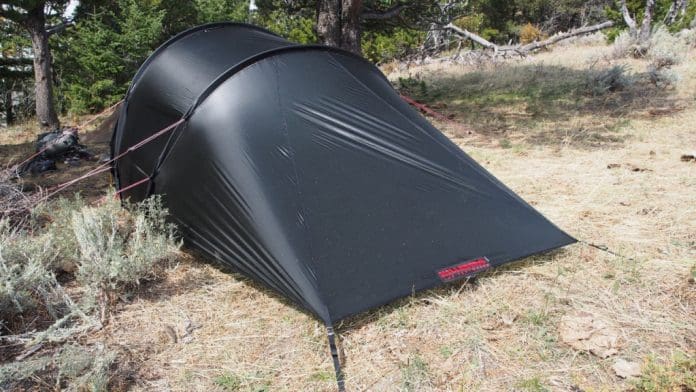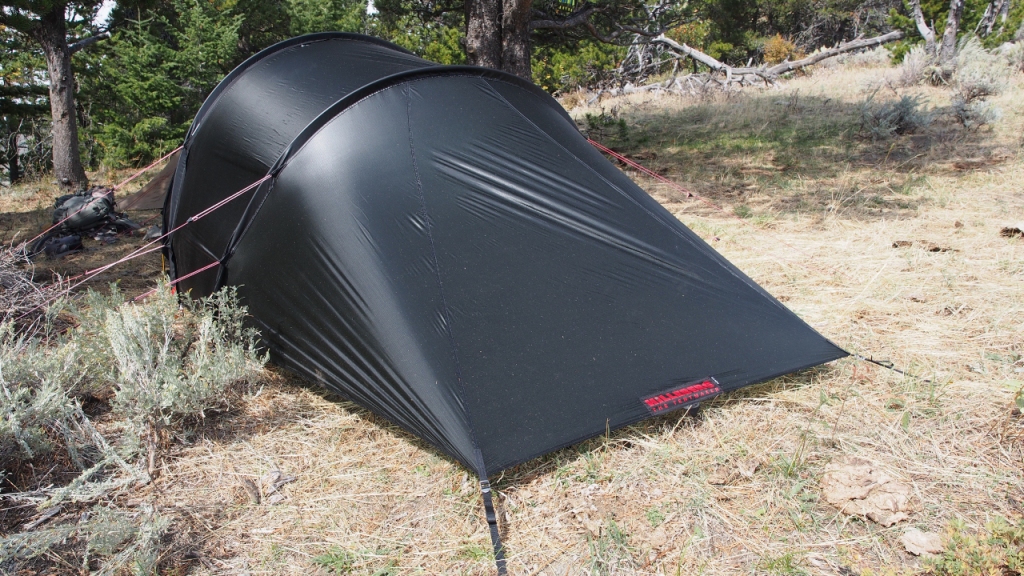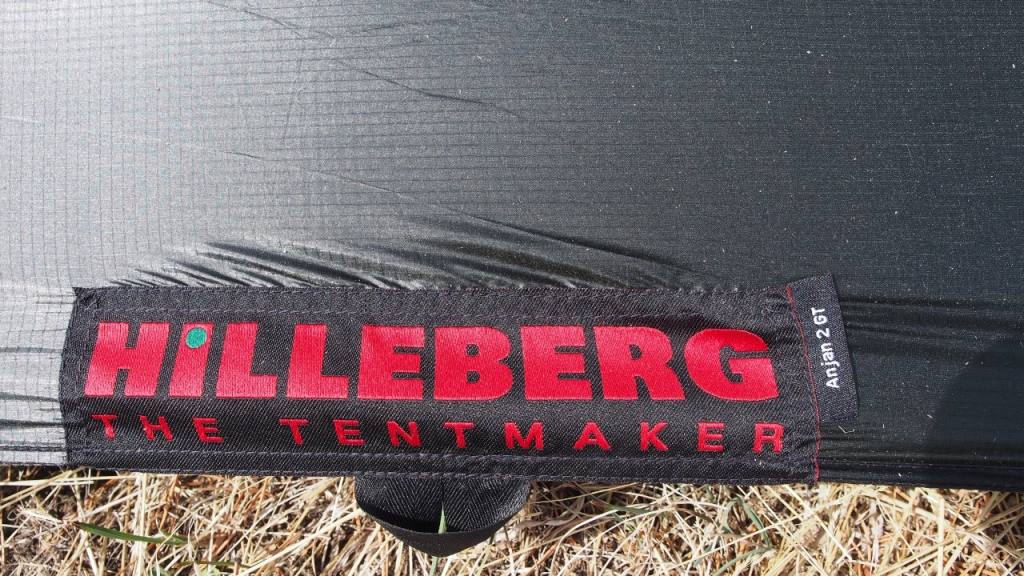Hilleberg Anjan 2 GT
By Josh Boyd, Guest Contributor
With the stifling and overwhelming power of the sun pounding down, a steady drip of sweat from my brow, and a few creative explicative words, I crammed the tent into my backpack. I frowned at my hunting partner and proclaimed with dismay that my backcountry base weight is increasing with each new piece of gear, including this new tent I had just stuffed into my pack. But the extended forecast showed a cold and wet weather system heading our way, replacing the dry and hot temperatures within a few days. I grudgingly shouldered my pack and we started up the low-angled creek bottom.
Over the years my ideal backcountry shelter had morphed from double wall tents to single wall tents to floorless mids to asymmetrical cuben fiber tarps; now I was back to a double wall tent and was very reluctant to pack it for this ten-day adventure. However within a few days I would be grateful to have this Hilleberg along.
Hilleberg Tent Lines
Hilleberg categorizes their tents into four different lines; black, red, yellow, and blue. The lines are separated by the tents’ designed use, which is directly related to the fabric weight and strength, pole and guy-line dimensions, and built in features such as venting and guy-out placement. The Black Label line is designed for all-season use and are the heaviest due to the rugged fabric specifications, pole diameter, venting features. The Red Label is a leaner all-season design with a lighter fabric, thinner poles, and less venting options. The Yellow Label line uses an even lighter fabric, has no option to close the mesh areas, and the outer tent fly doesn’t extend to the ground. They are designed for less harsh conditions where the potential for snow and heavy winds are minimal. The Blue Label line consists of very specialized shelters ranging from giant group set-ups to a small single wall minimalist shelter.
My needs for backcountry shelters vary widely from the bug-besieged summer scouting trips when brief thunderstorms trundle in rapidly, to the short cold days and frigid snowy nights of late November rifle season. Weather in the middle of Montana fall hunting season can produce blue sky or rain or snow, with abrupt changes between all. Each individual shelter in my arsenal has a fairly specific use and optimal set of conditions for use, yet I’ve been lacking an all-encompassing tent to use in whatever circumstance arises. The majority of the time, I’m hunting and camping in heavily forested and protected terrain where heavy winds are not a concern. And when deep snows arrive, they rarely appear unexpected. Based on the average weather and terrain I encounter throughout the season, the Hilleberg Yellow Label tents seemed to fit my needs. Another major draw was the lighter weight of the line, which appealed to the ounce-counting side of my personality.
Anjan 2 GT Specifications
The tent I chose to pack into the mountains in 2015 was a Hilleberg extended vestibule Anjan 2 GT, which is included in the Yellow Label line. The tent is designed specifically as a lightweight three-season tent for adventures in protected terrain and moderate conditions. The Anjan tunnel design isn’t free standing, but needs only four stakes for pitching. The inner and outer tents can be used separately if either one isn’t required for a specific trip. There is a single entrance into the inner tent from the side of the extended vestibule. Both entrances have two-way zippers.
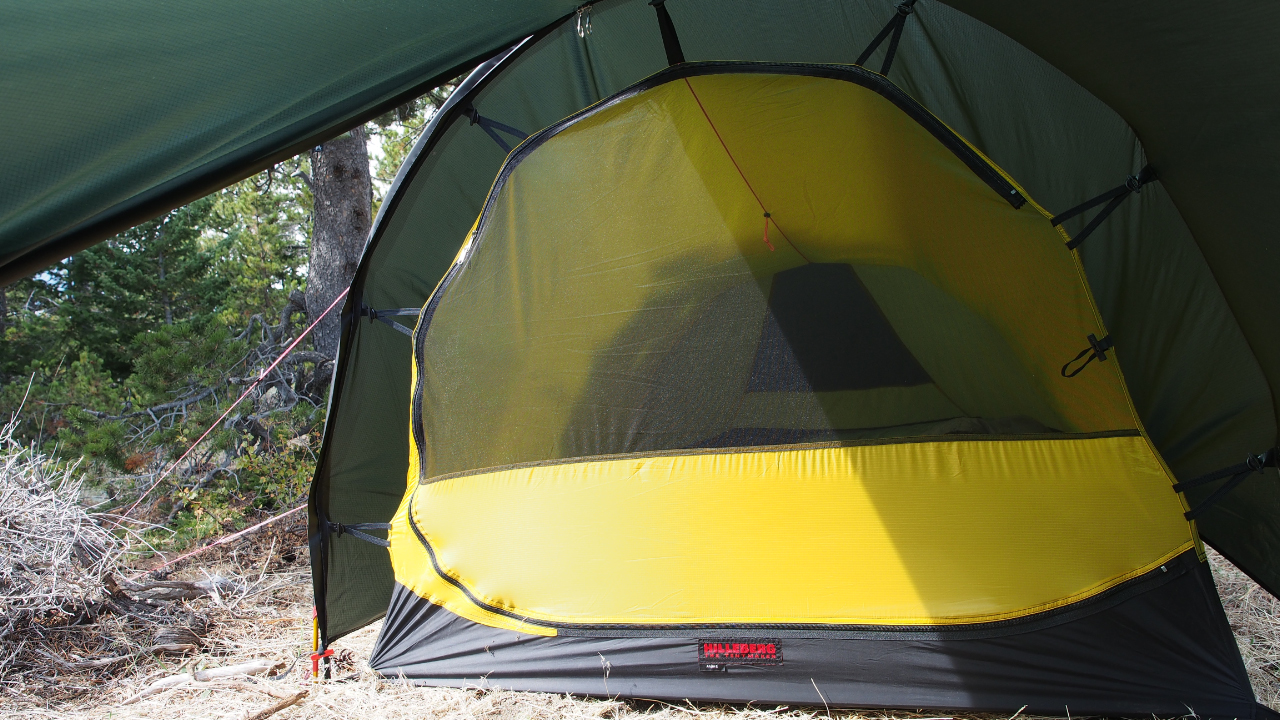
The mesh door to the inner tent and the side entry of the vestibule
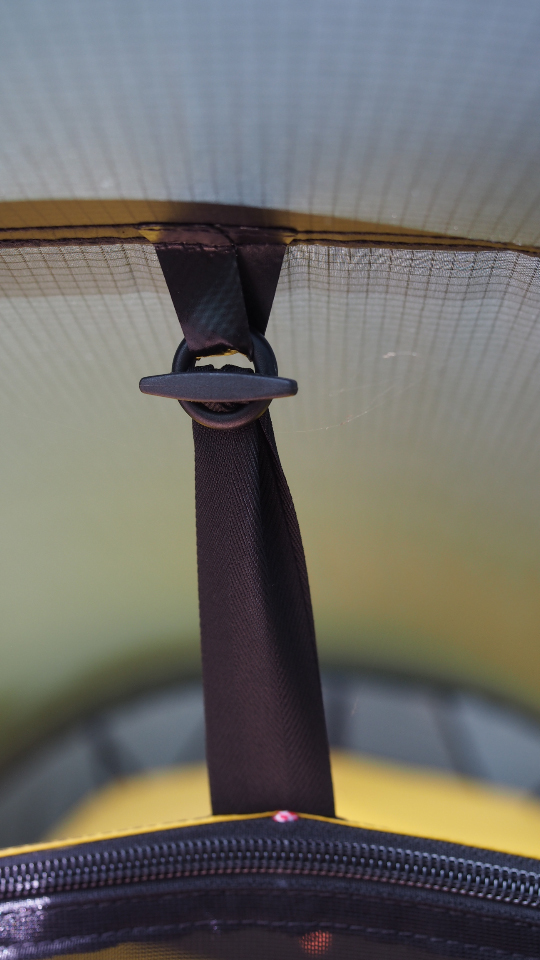
One of the attachment points of the inner tent to the outer tent
The footprint for the Anjan is 30.1 ft2 for the tent and 25.8 ft2 for the spacious vestibule. The tent comes with 3 poles made of 9 mm DAC Featherlight aluminum, and 16 aluminum tri-peg stakes, which are the lightest Hilleberg supplies. The total weight, which includes all 2mm low-tensile Vectran guy-lines, stakes, and stuff sacks, is 4 lbs. 10 oz.
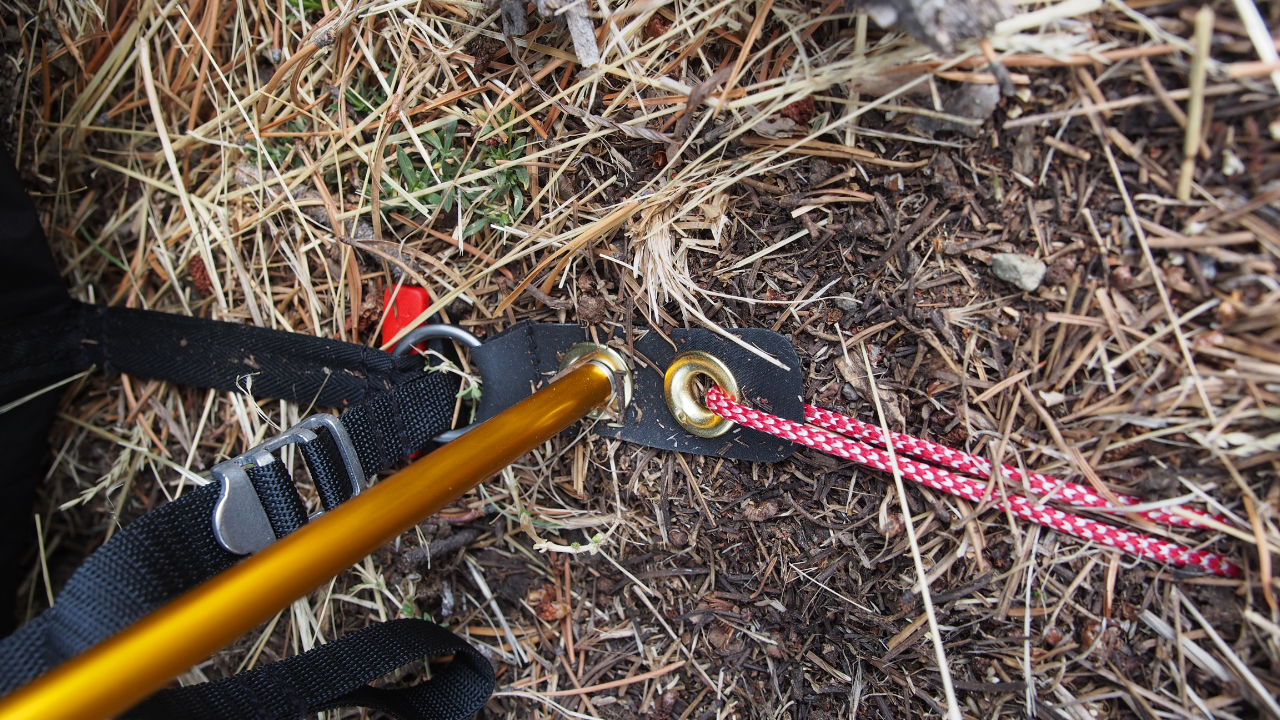
Pole tab with the DAC aluminum pole inserted
Stripping and replacing a few items can reduce this weight significantly (more on that topic later). For those who want to compare, the triple silicon-coated fabric of the outer tent is Kerlon 1000 weighing 1.18 oz. /yd2, while the Black Label tents uses a fabric weighing 1.62 oz. /yd2 and the Red Label 1.45 oz. /yd2. The inner tent of the Anjan is lighter fabric coming in at 0.89 oz. /yd2.
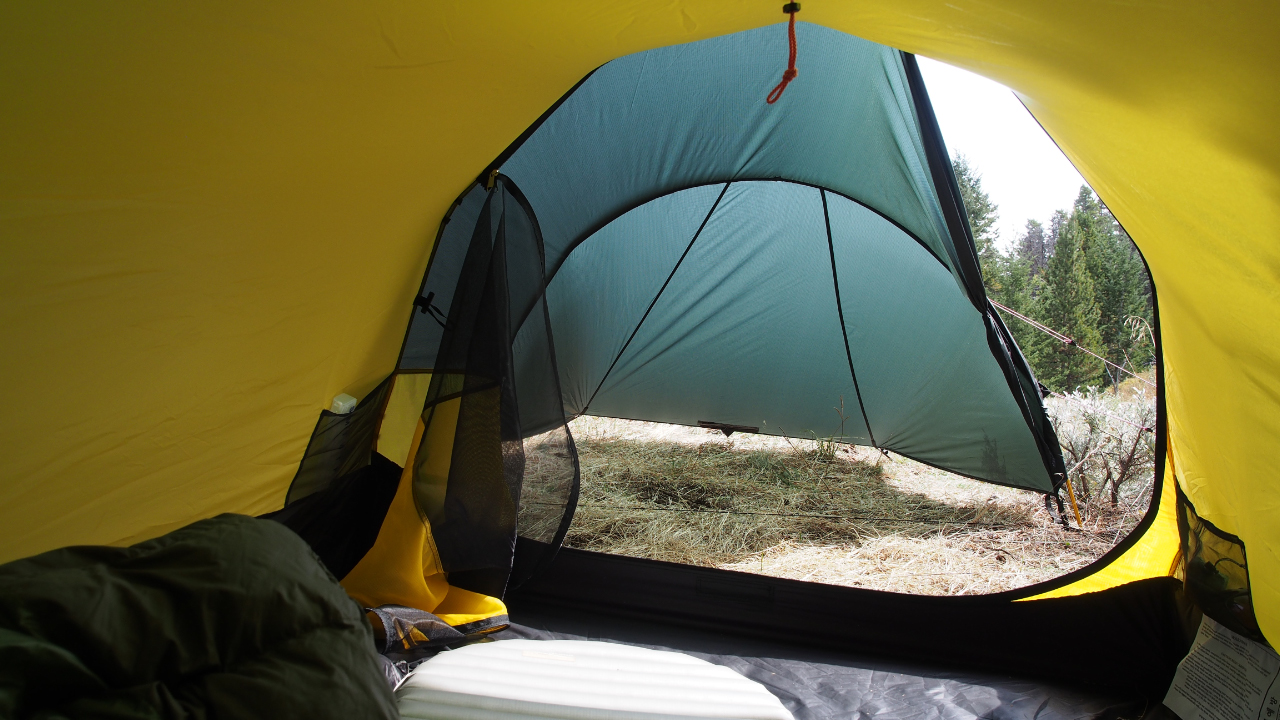
The extended outer tent vestibule with 25 square feet of space and inner tent with steep side walls
The floor of the inner tent is a full bathtub-style, with sidewalls extending well above the lower edge of the outer tent. The outer tent does not fully extend to the ground like the Red and Black label tents, which allows for more constant airflow. The outer tent can be lowered on one side to increase protection on the windward side. The front and rear mesh openings on the inner tent do not have closures and they facilitate continuous airflow.
Real world use
My first real outing with this tent was the one described above, when I decided to use the tent in its original and unaltered 4 lbs. 10 oz. form. It was pitched in a west-facing saddle amongst a group of wind-stunted lodgepole pine in central Montana. The ground was dry and the temperatures near 80 degrees. A couple of days into the hunt, it deluged for 12 hours overnight. Two days later, rain soaked the mountain range for another 24 hours. It turned streams to chocolate brown and trails to slippery muck. The high pressure preceding the rain generated heavy afternoon gusts every day. The first trip ended with cold, frost-laden mornings in the 20’s and afternoons topping out in the 50’s. It was quite a kick-off for the 2015 season of tent testing.
Throughout the fall, warm evenings were a great test of the double wall tent’s ventilation properties. On a stifling day or night, I rolled both the front and rear of the outer tent up for greater airflow. But with the outer tent pulled down the tent is still very breathable. Even on the coldest and wettest days when heavy wind-driven rain hammered the tent, condensation was non-existent. This is due to the tent-inside-a-tent design. However, winter storms would be more comfortable in a shelter with more protection such as closable mesh openings and an outer tent sealing against the ground. In my mind, this is the only thing keeping this tent from being a true four season shelter.
The wind and rain events soaking the mountains and keeping me tent-bound for 24 hours were heavier than I expected for my first trip. The rain storms rivaled a western Montana storm in their intensity and volume, only lacking in duration. The fabric of the outer tent was incredibly waterproof and did not wet out at all. It also had very minimal stretch when wet, eliminating the need to retighten the guy-lines to keep the pitch taut.
The outer tent’s two-way zipper is shielded from water by a stiff rubberized flap and didn’t leak at all during testing, yet it is still easy to operate with gloves. The inner zipper is smaller, durable, and didn’t disappoint during testing.
The tunnel design is fast and easy to pitch with the inner and outer tents linked. This is a great feature when pitching the tent in bad weather, as the inner tent isn’t exposed to rain during set up. The tunnel design also gives the Anjan really steep sidewalls, maximizing the interior space and shedding moisture efficiently. But the rear wall’s acute angle may cause taller users to rub their feet against it. There is sufficient room for two hunters without extra gear inside, which is fine since the vestibule is extremely large (a third person could sleep in it in a pinch).
The three tent poles are extremely rigid and withstood some difficult conditions. The stakes held decently in the compact soil. At 0.03 oz. each, they are light but not the best at holding under a high wind load. Most had to be overdriven to be secure.
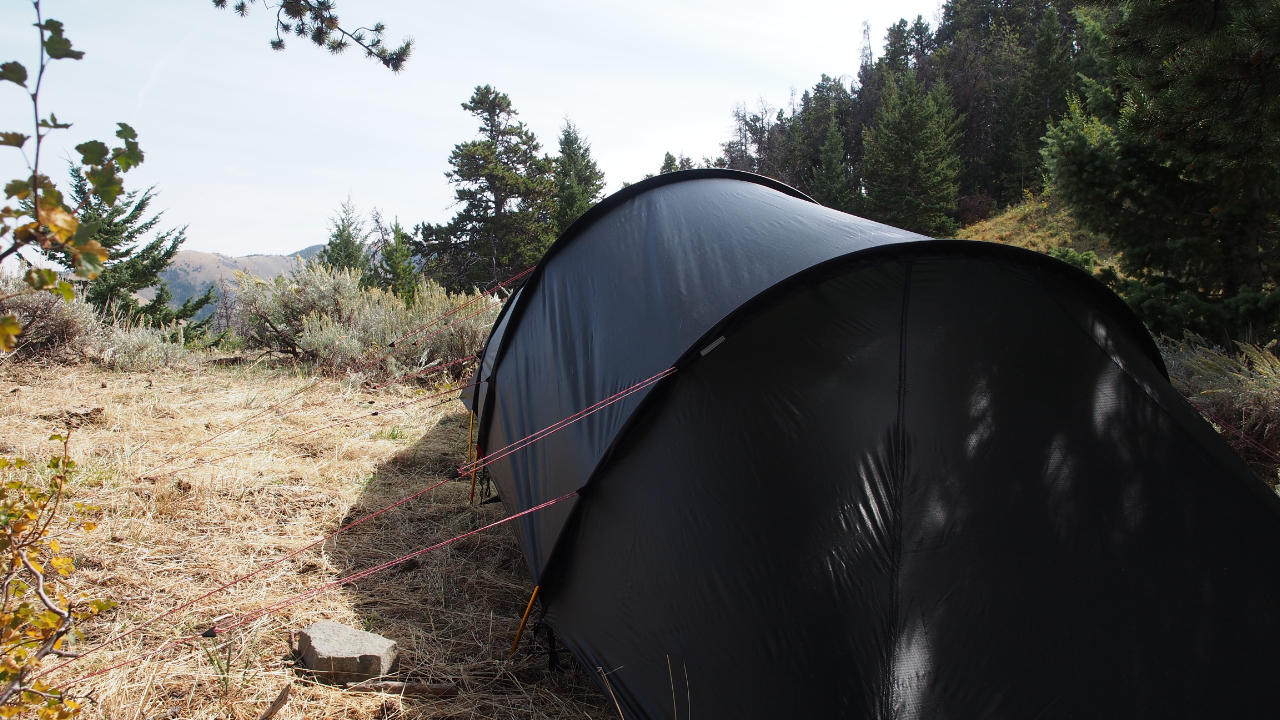
The hooped tunnel design of the Anjan 2 GT
Modifications and Streamlining
For me, the hardest part of using this tent was coming to terms with its weight and packed size. I’ve been a floorless, single-wall shelter user for years and this tent is about two pounds heavier and twice the packed volume of my largest floorless shelter. This tent was supplied to me for testing from 1-Shot Gear of Denver, Colorado, so I gave Grant Gladson, their in-house Hilleberg expert, about making some modifications. He gave me the thumbs up so without reservation, I took to the task of making a great tent even better.
Here is a quick rundown of what I did:
- Cut off the 4 small metal zipper pulls on the door of the inner tent and replaced them with 1.8 mm cord.
- Cut off the 2 large interior metal zipper pulls of the vestibule door and replaced them with 1.8 mm cord. I left the two outside pulls intact otherwise the cord may wick moisture under the waterproof flap.
- Cut off the 12 metal rings attaching the inner and outer tents to the grommeted pole attachment tab and replaced it with 1.8 mm cord.
- Replaced the 2 mm stake cord with shorter pieces of 1.8 mm cord.
- Replaced the 2 mm guy lines with shorter pieces of 1.5 mm cord.
- Replaced the 16 tri-pegs with 12 MSR Mini Groundhog stakes which weigh about the same, but have increased holding power, which calls for fewer stakes to hold the tent stable
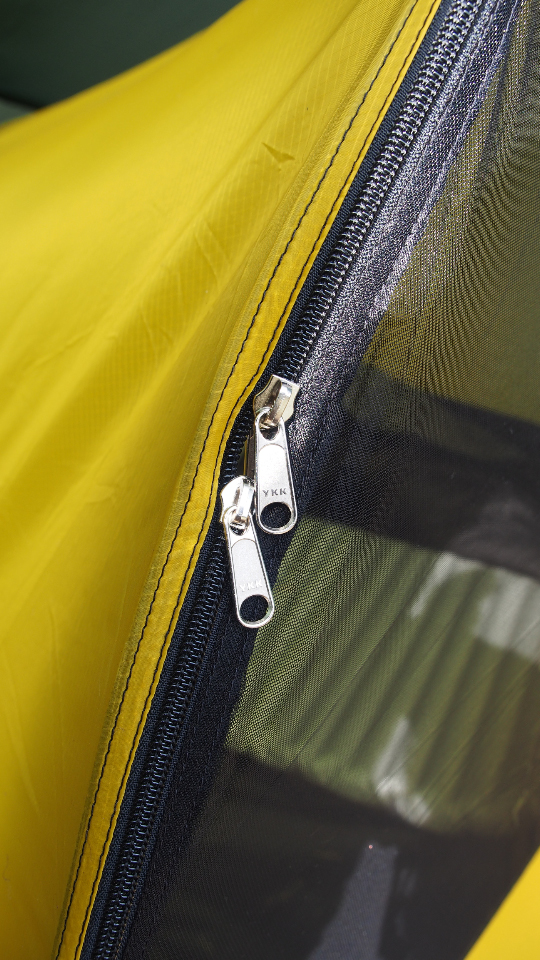
The original metal zipper pulls
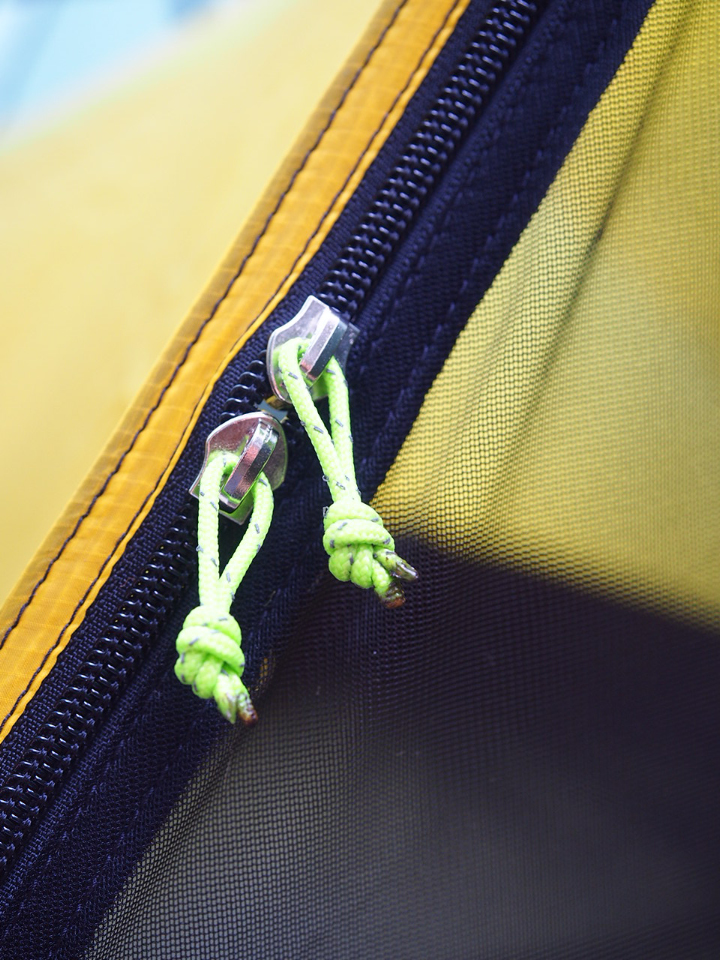
1.8 mm cord replacing the original metal zipper pulls
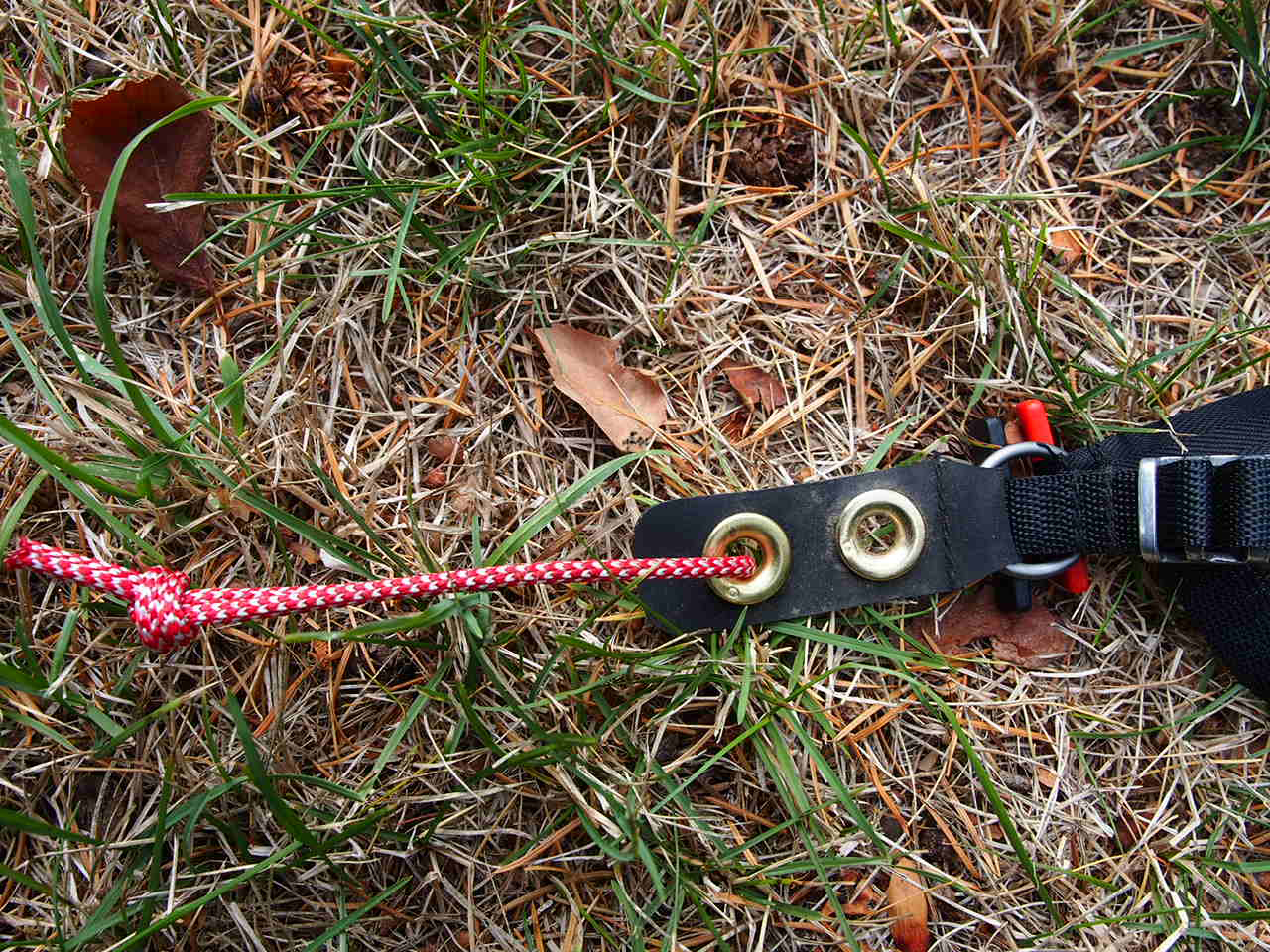
The original stake loop (2 mm cord) and pole tab
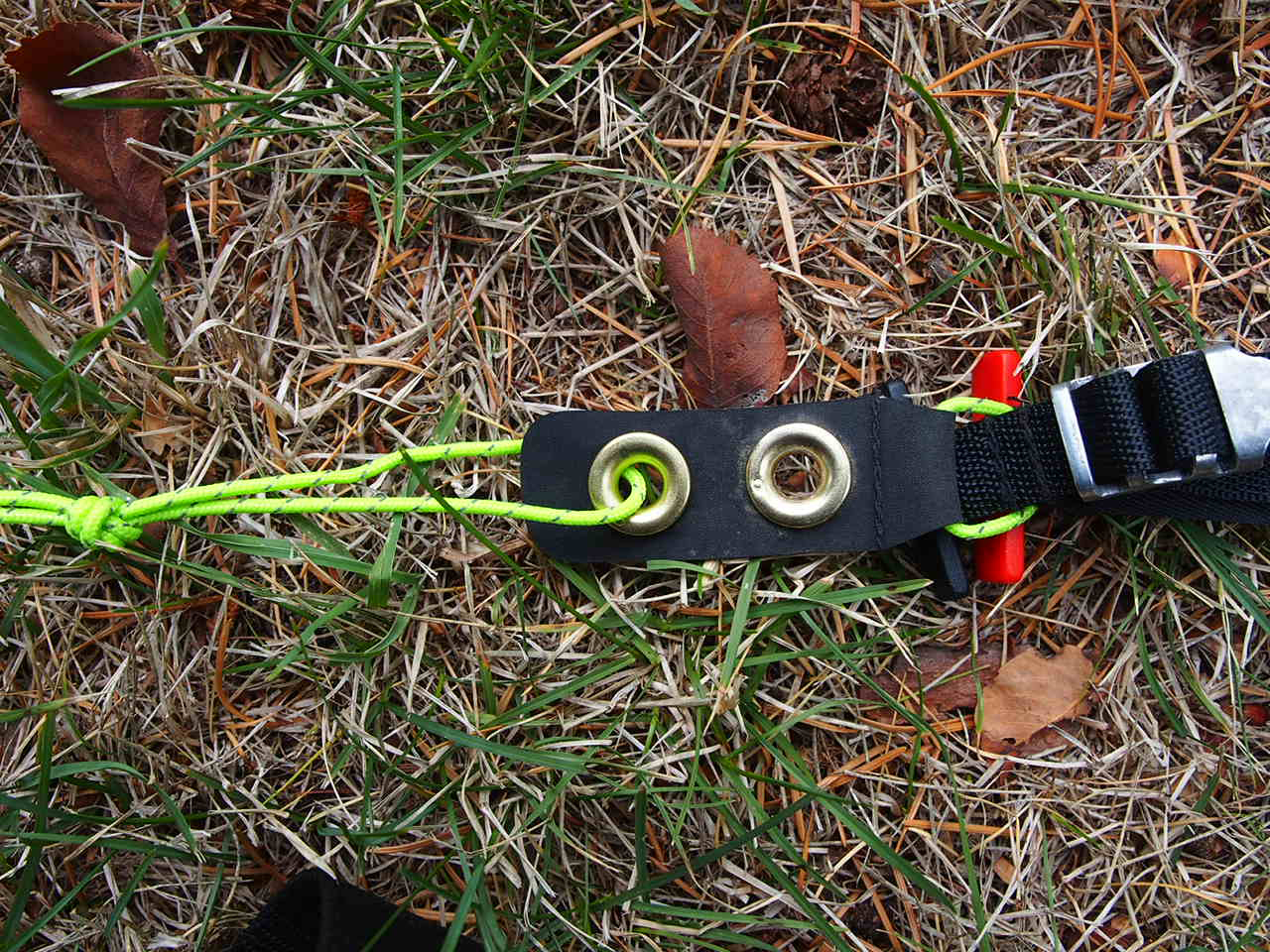
The modified stake loop and metal ring replacement (1.8 mm cord)
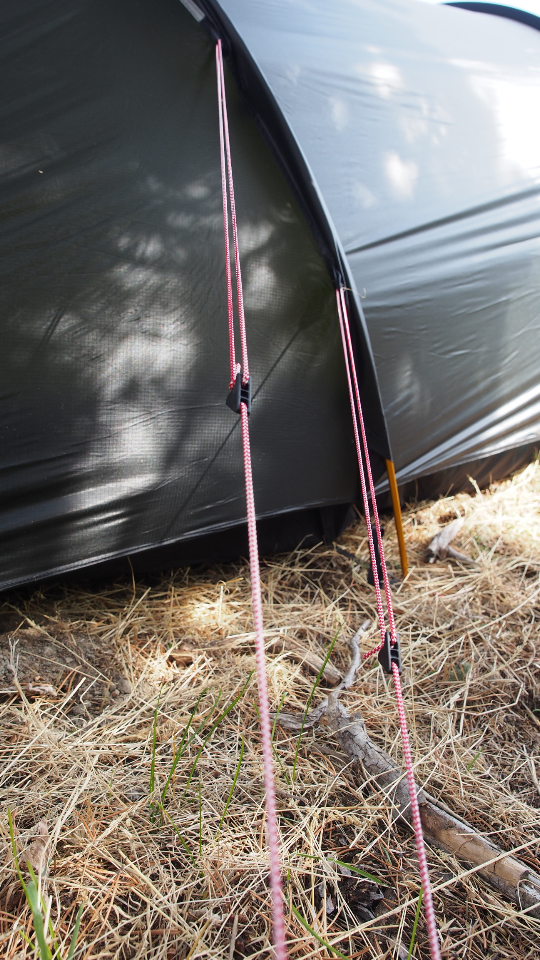
The original 2 mm guy lines
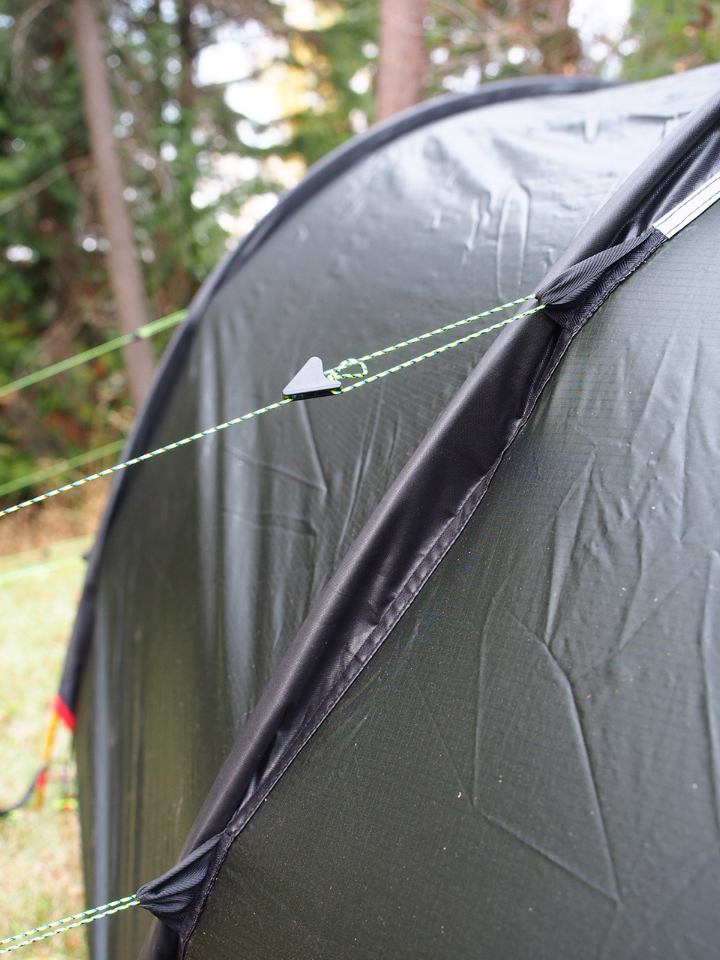
The modified 1.5 mm guy lines with tension adjusters
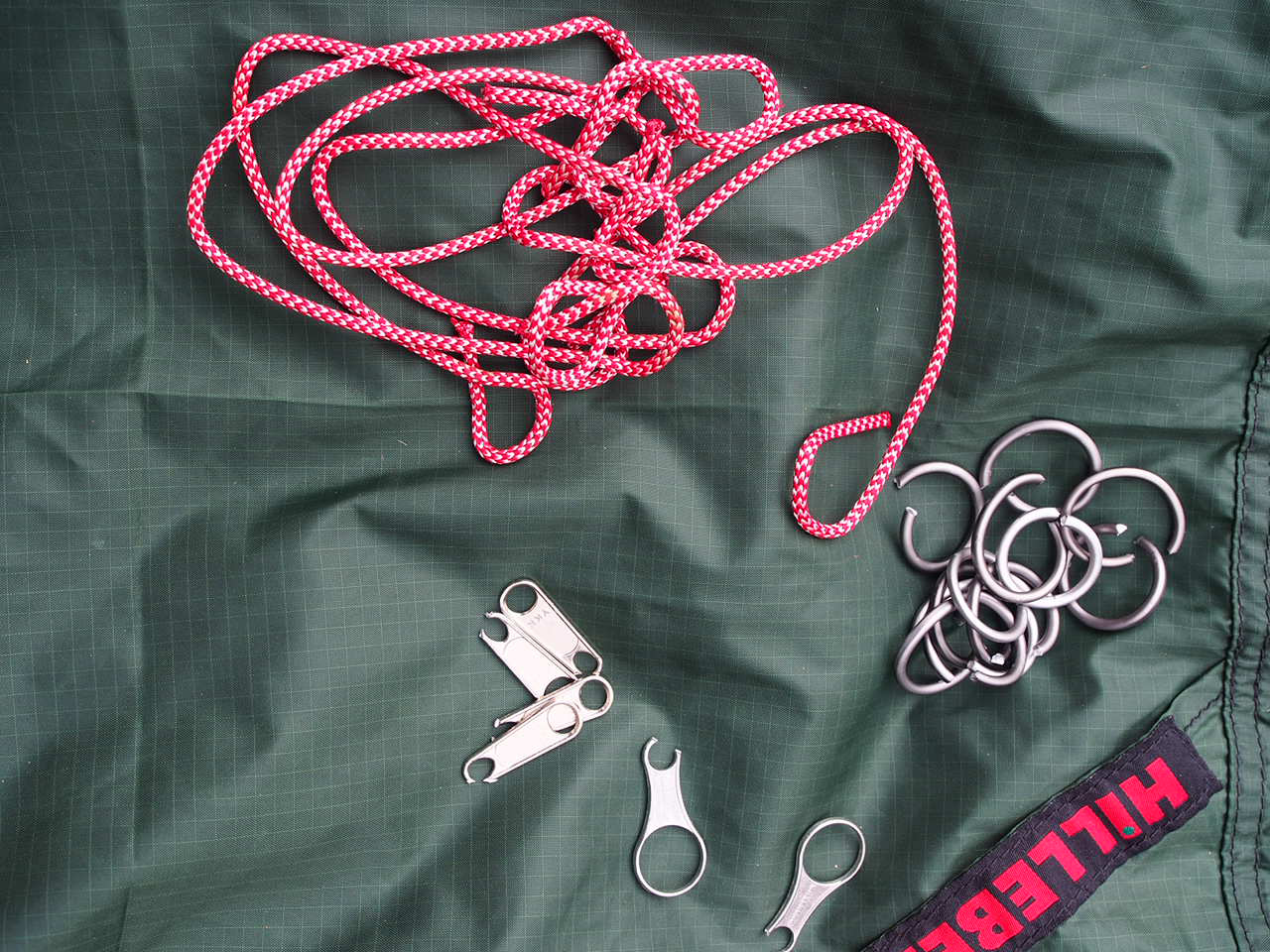
The original 12 metal rings, 2 mm stake cord, and metal zipper pulls
These simple modifications resulted in a weight reduction of about 8 ounces. A little more could be cut with a couple extra steps. The plastic line-locks on the guy lines could be replaced with bowline knots on the bottom guy-out point and top-knot hitches on the top. Also, the extra grommet on the pole tab where the stake loops are tied could be cut off. Lastly, the inner tent can be removed and the outer tent used alone. This last step isn’t a modification, as it is part of the shelter’s design, and will shed 21 ounces. With the alterations in place and the inner tent removed the shelter comes in at 2.8 pounds and 56 ft2 of space.
Overall Thoughts
The Anjan 2 GT is a superb three season tent with a four season temperament. The fabric is extremely tough, waterproof, and handles severe weather without disappointment. It may be the toughest fabric used in a three season tent of any tent manufacturer. If in doubt request, a Hilleberg catalog and fabric swatches, and try to tear the Kerlon 1000 swatch. It is impressively strong.
Overall, this tent is over-built compared to any other three season offering. This allows it to be an amazingly versatile shelter, which can easily take a hunter into the harsher late fall and winter weather. Yet with its remarkable venting attributes, is perfectly suited for early season hunts as well. It wouldn’t be my first choice to take to Alaska for an unpredictable tundra hunt, nor would I take it on a 14-day backpack sheep hunt; there are more refined choices available. But for hunters looking for a well built, robust, and adaptable shelter for the majority of western big game seasons, the Hilleberg Anjan 2 GT is an easy choice.
Thanks to 1-Shot Gear of Denver for supplying this tent, you can learn more about this tent here or view the entire Hilleberg line 1-Shot offers here. Grant and the staff can guide you through the selection process. If you’re a member of Rokslide, be sure and mention that; 1-Shot will give you the best price possible.
You can discuss this article or ask Josh questions here
Need a bigger Hilleberg? Then see the review on the Nallo 3GT here














